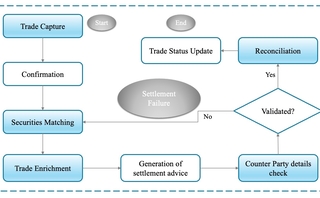ICE to offer ultra-low latency data between the US and Europe
The offering will run eastward, connecting routes in the US with European markets in London, Frankfurt, and Bergamo.

Intercontinental Exchange’s ICE Global Network is rolling out a trans-Atlantic data service that will offer ultra-low latency data between the United States and Europe. The offering will combine the current wireless services of the network with low latency fiber to create a market data offering between Aurora, Illinois, and Europe.
The ICE Global Network offers data delivery and execution services over fiber and wireless networks. It also provides hosted and managed services and cloud offerings to give customers flexible options for accessing data.
“We’re already moving data from Aurora to New Jersey and between Aurora and Asia, so we were looking at a way of bringing this data into Europe as fast as possible,” Nicolas Bonnet, director of global connectivity product at ICE, tells WatersTechnology. “We’ve managed to combine the relevant assets to make this into an offering and we can now go live.”
Geographically, the route will start in Aurora, Illinois, the home of the Chicago Mercantile Exchange’s market, one that is tracked and monitored heavily by market participants. From there, it will go to New Jersey (Aurora and New Jersey Metro are already connected through wireless on the network) and then travel underwater using a cable system to cross the Atlantic and arrive in London, where the signal will fan out.
The service will be officially launched next month, with the first route going eastbound to data centers in Slough and Basildon in the London area; Basildon is the home of ICE Data Services in Europe. The October launch will also include access to Frankfurt, Germany, the home of Deutsche Börse and Eurex. In November, access will be extended to the London Stock Exchange’s datacenter Telehouse North Two in Docklands, London, and the newly relocated Euronext data center in Bergamo, Italy.
All five endpoints allow access to significant derivatives, equity, fixed income and futures markets in Europe. London essentially serves as a gateway to the rest of Europe.
Target firms for this offering can range from high-frequency trading firms, prop shops, and tier-1 banks. Anyone who participates in algorithmic trading and needs to move data quickly to feed their algos could be a prime candidate.
Late last year, ICE expanded the network in Asia with new access centers in Hong Kong, Shanghai, and Tokyo. These enhancements included ultra-low-latency access to the Hong Kong Stock Exchange (HKEx), the Japan Exchange Group (JPX), and the Shanghai Futures Exchange (SHFE). Magnus Cattan, head of ICE fixed income and data services in Apac, told WatersTechnology the enhancements would serve a growing high-frequency trading community in the region as well as support the growth of local quant and alternative funds.
ICE also sells access to the Go West Network, a transpacific ultra-low latency network. The network was reportedly formed in 2016 by a consortium of trading firms, including Jump Trading, Virtu Financial, DRW Holdings, IMC, Optiver, Tower Research, and XR Trading, and uses a combination of wireless towers, fiber-optic lines and submarine cables to connect CME Group in Chicago to JPX.
Peter Nabicht, president of the Securities Technology Analysis Center (STAC), says that as markets become more connected globally, speed is vital, especially during turbulent markets and to manage risk. “Based on that price discovery or the sooner they can make a risk decision to get out of a market to cut their losses, the more likely they are to get a favorable price,” he says. “The faster their market data is, the better chance the decisions they’ve made come to fruition in their actual interaction with the markets.”
Market data offered as a service on low-latency networks expands the amount of people who can access it, he says. This means more competition and a better chance of accessing more attractive pricing.
“Getting data from Aurora to other places in the world is important,” says Nabicht, who served as head of electronic market development at Dealerweb, Tradeweb’s inter-dealer division, until March 2020. Not only do market participants consume CME data to trade on the CME, but they will also consume the data to make pricing and risk decisions in other marketplaces.
Bonnet says this rollout will help ICE’s future expansion plans. “Stage one is about moving data from Aurora to multiple locations in Europe,” he says. “It’s just stage one because we are looking at the bigger picture,” and pushing the connection farther eastward.
The second phase could include another data source from the US delivered to Europe, or it could be a new data source from Europe delivered to the US using the same combination of technology.
“We’re going to eventually move things westbound from Europe to the US,” he says. “But we had to start with something, and we started with what we think was [would be] the most valuable product for the trading community.”
Further reading
Only users who have a paid subscription or are part of a corporate subscription are able to print or copy content.
To access these options, along with all other subscription benefits, please contact info@waterstechnology.com or view our subscription options here: http://subscriptions.waterstechnology.com/subscribe
You are currently unable to print this content. Please contact info@waterstechnology.com to find out more.
You are currently unable to copy this content. Please contact info@waterstechnology.com to find out more.
Copyright Infopro Digital Limited. All rights reserved.
You may share this content using our article tools. Printing this content is for the sole use of the Authorised User (named subscriber), as outlined in our terms and conditions - https://www.infopro-insight.com/terms-conditions/insight-subscriptions/
If you would like to purchase additional rights please email info@waterstechnology.com
Copyright Infopro Digital Limited. All rights reserved.
You may share this content using our article tools. Copying this content is for the sole use of the Authorised User (named subscriber), as outlined in our terms and conditions - https://www.infopro-insight.com/terms-conditions/insight-subscriptions/
If you would like to purchase additional rights please email info@waterstechnology.com
More on Trading Tech
For MarketAxess, portfolio trading buoys flat revenue in Q3
The vendor is betting on new platforms like X-Pro and Adaptive Auto-X, which helped forge a record quarter for platform usage.
Quants look to language models to predict market impact
Oxford-Man Institute says LLM-type engine that ‘reads’ order-book messages could help improve execution
JP Morgan pulls plug on deep learning model for FX algos
The bank has turned to less complex models that are easier to explain to clients.
Nasdaq says SaaS business now makes up 37% of revenues
The exchange operator’s Q3 earnings bring the Adenza and Verafin acquisitions center stage.
Harnessing generative AI to address security settlement challenges
A new paper from IBM researchers explores settlement challenges and looks at how generative AI can, among other things, identify the underlying cause of an issue and rectify the errors.
The causal AI wave could be the next to hit
As LLMs and generative AI grab headlines, another AI subset is gaining ground—and it might solve what generative AI can’t.
Waters Wrap: Operational efficiency and managed services—a stronger connection
As cloud, AI, open-source, APIs and other technologies evolve, Anthony says the choice to buy or build is rapidly evolving for chief operating officers, too.
BlackRock forecasts return to fixed income amid efforts to electronify market
The world's largest asset manager expects bond markets to make headway once rates settle.








